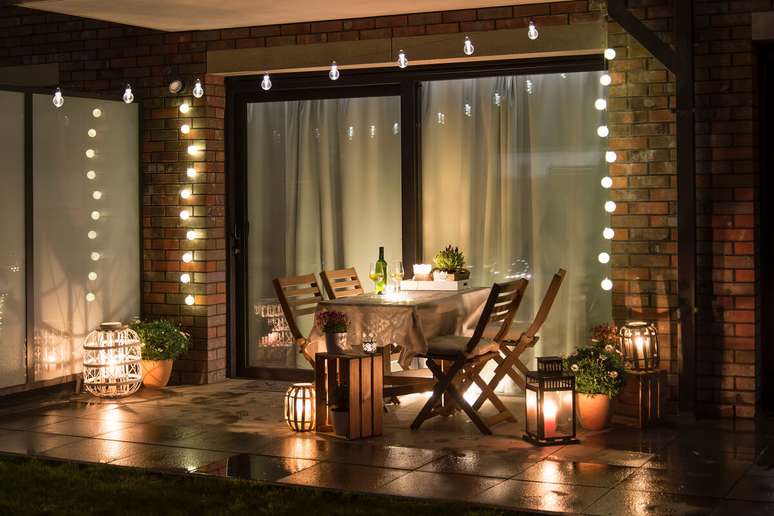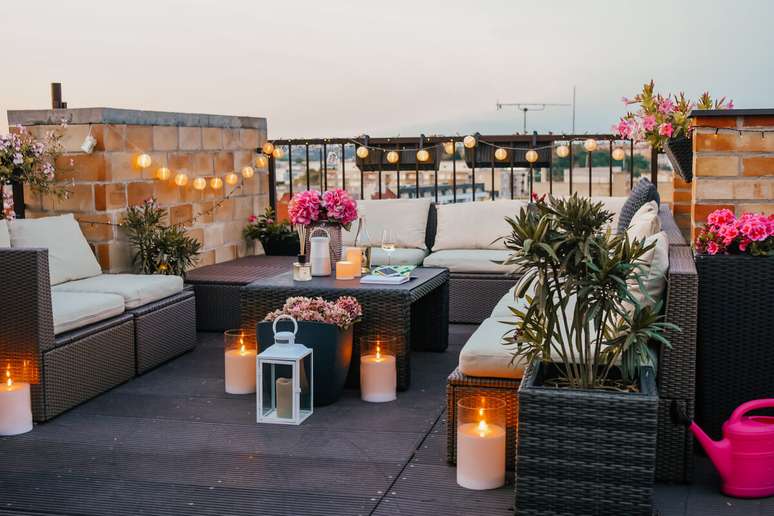Architects explain how to make your terrace or balcony more welcoming
The exterior of the house also deserves special attention when it comes to decoration. According to architect Karoline Coutinho, the balcony is located in front of the house or, in the case of the apartments, connected to one of the entrances; the terrace, in turn, is in the upper part of the property. The location, purpose and wishes of the resident must be taken into consideration when thinking about furnishing these spaces.
So, below, check out tips to make your home even cozier!
1. Usable furniture
Architect Gabriela Barros explains it the furniture The most suitable for balconies and terraces are sofas, coffee tables and coffee tables, armchairs and poufs. He also points out that if these spaces are open, such furniture must be made of resistant materials, such as aluminum, stainless steel, synthetic or natural fiber. This way they will not suffer wear and tear if exposed to rain or sun.
2. Color palette
According to Karoline Coutinho there is no specific color scheme that can be used to decorate the balcony and terrace. “This will depend a lot on the personality of the residents or the style of the environment,” she adds. She only emphasizes that the use of shades must harmonize with the other elements present in the environment.

3. Lighting for residents’ demand
For Gabriela Barros, the balcony and terrace must have more than one type of lighting, to assist with resident requests. “Ideally, there should be cool (white) light to serve work functions and a scene with warm (yellow) lighting to provide a more intimate and relaxed environment,” she suggests. According to the architect, it is also important to invest in light points in specific positions, such as floor, table and wall lamps.
4. Decorative objects
Decorative items for the balcony and terrace do not necessarily have to be the same. In the case of the balcony, architect Gabriela Barros recommends using paintings, vases, straw baskets and natural fiber carpets. As for the terrace, she recommends using cushions in nautical fabric, swings in natural or synthetic fibers and water fountains.
5. Outdoor plants
Plants They are also very suitable for decorating outdoor environments. However, Karoline Coutinho clarifies that the most recommended species are those resistant to the sun, such as the Sword of St. George, the small ones, such as cacti and succulents, and those that can be grown in pots and pruned, such as Clusia, Dracena and bamboo palm.
6. Functional areas
Divide the space into functional areas, such as a dining area, a reading nook or a barbecue space. This helps maximize the space and makes it more inviting. It also keeps the space from appearing disorganized or chaotic, making the decor more welcoming.
7. Shadow elements
The outdoor space is often illuminated by the sun, but the inhabitant does not always want this light to dominate the room. environment. To avoid this problem, awnings, umbrellas and pergolas with climbing plants are an excellent alternative, as they not only provide shade, but also add a pleasant aesthetic touch to the space.
Source: Terra
Ben Stock is a lifestyle journalist and author at Gossipify. He writes about topics such as health, wellness, travel, food and home decor. He provides practical advice and inspiration to improve well-being, keeps readers up to date with latest lifestyle news and trends, known for his engaging writing style, in-depth analysis and unique perspectives.








